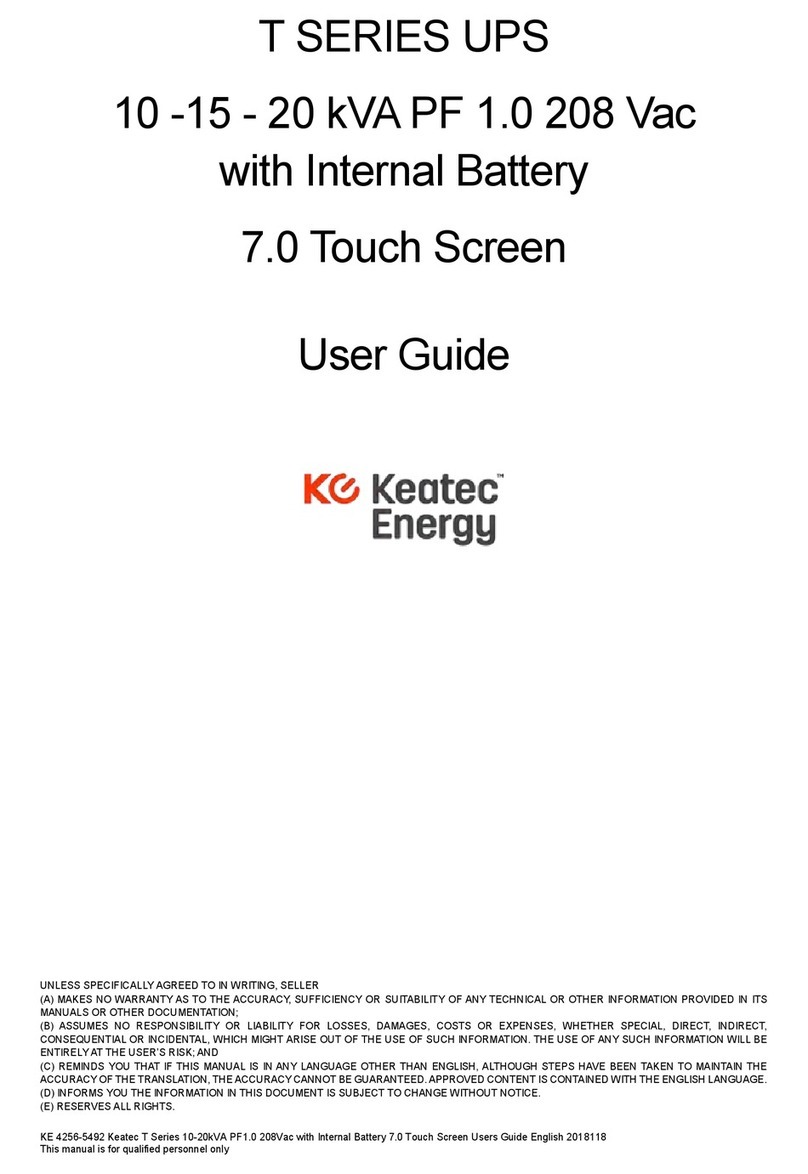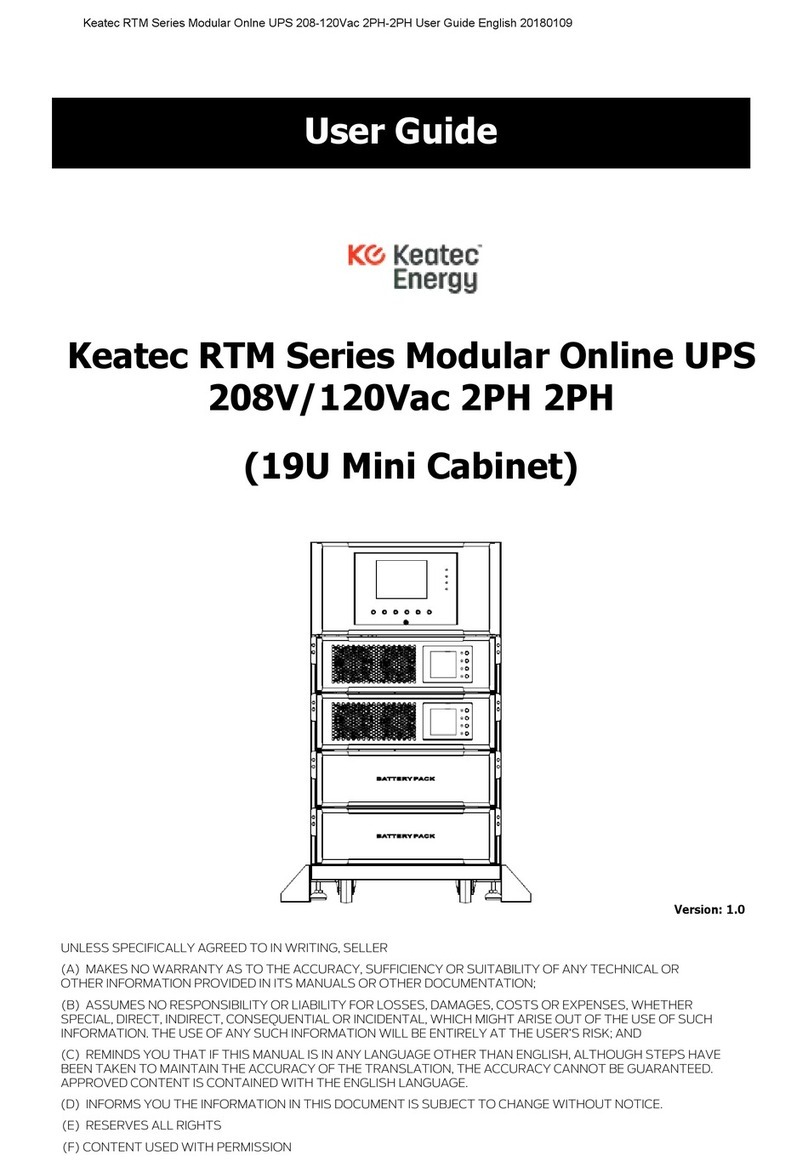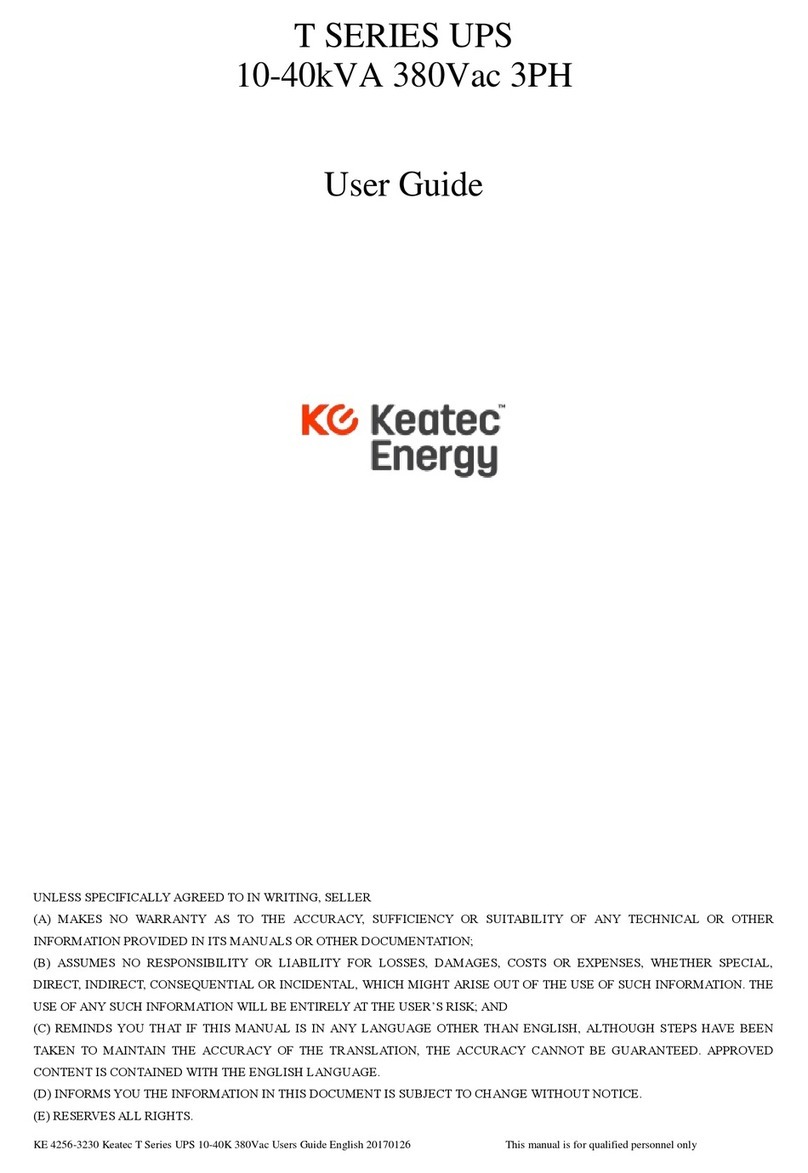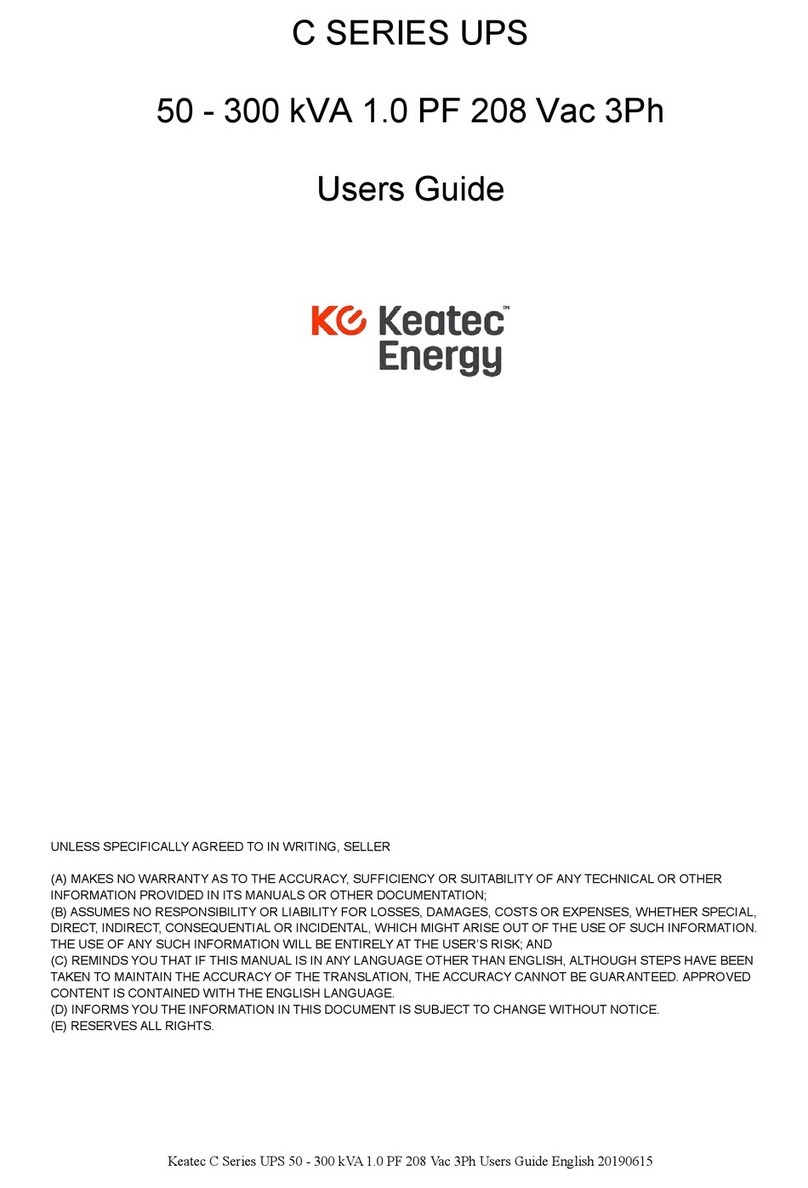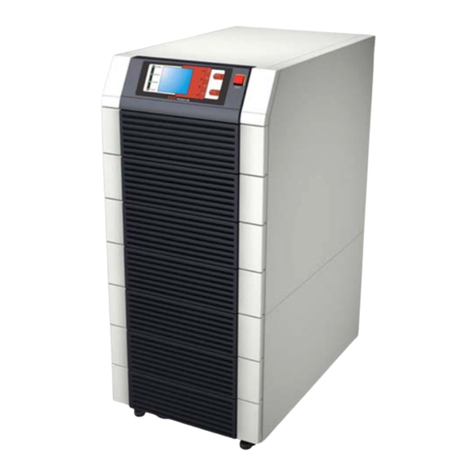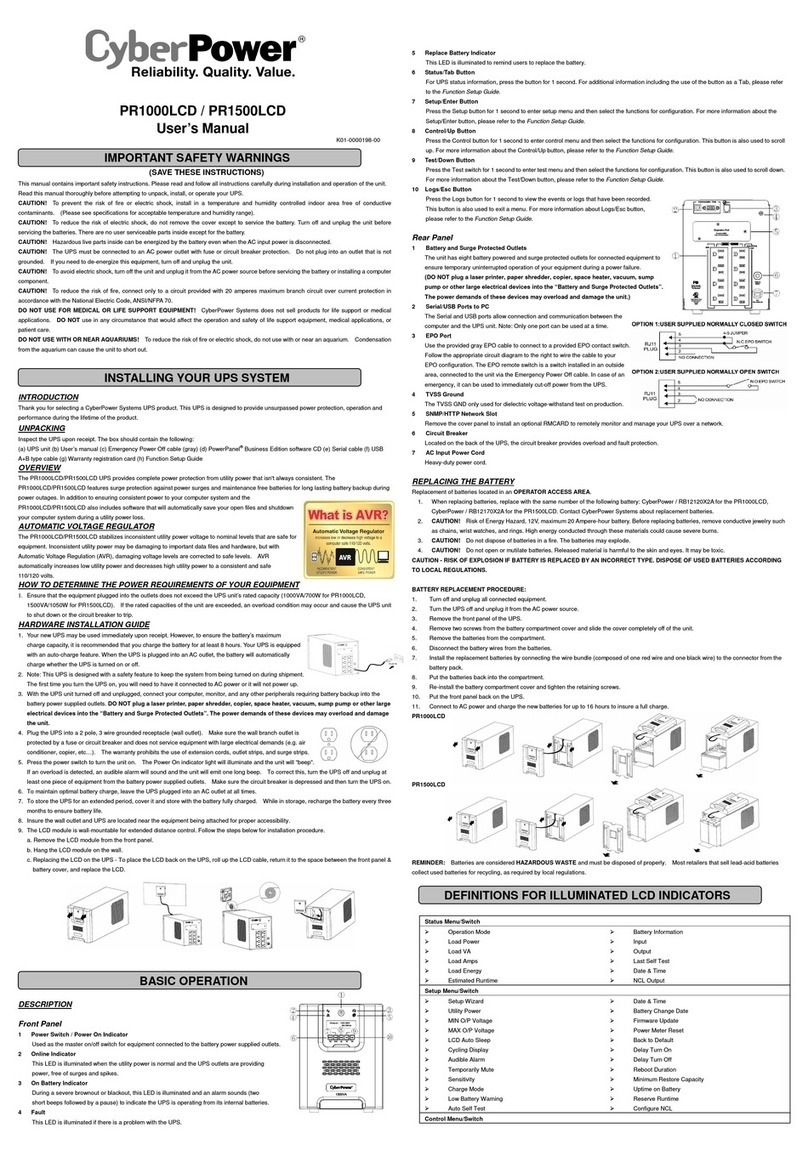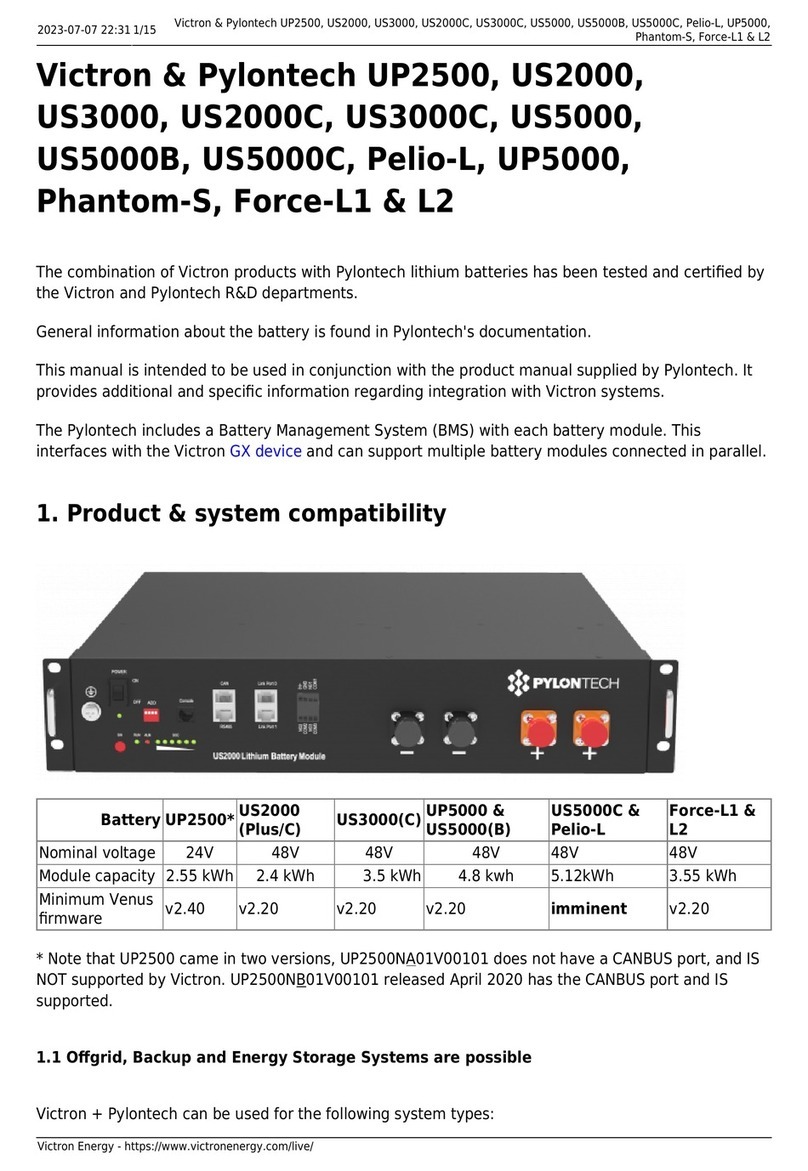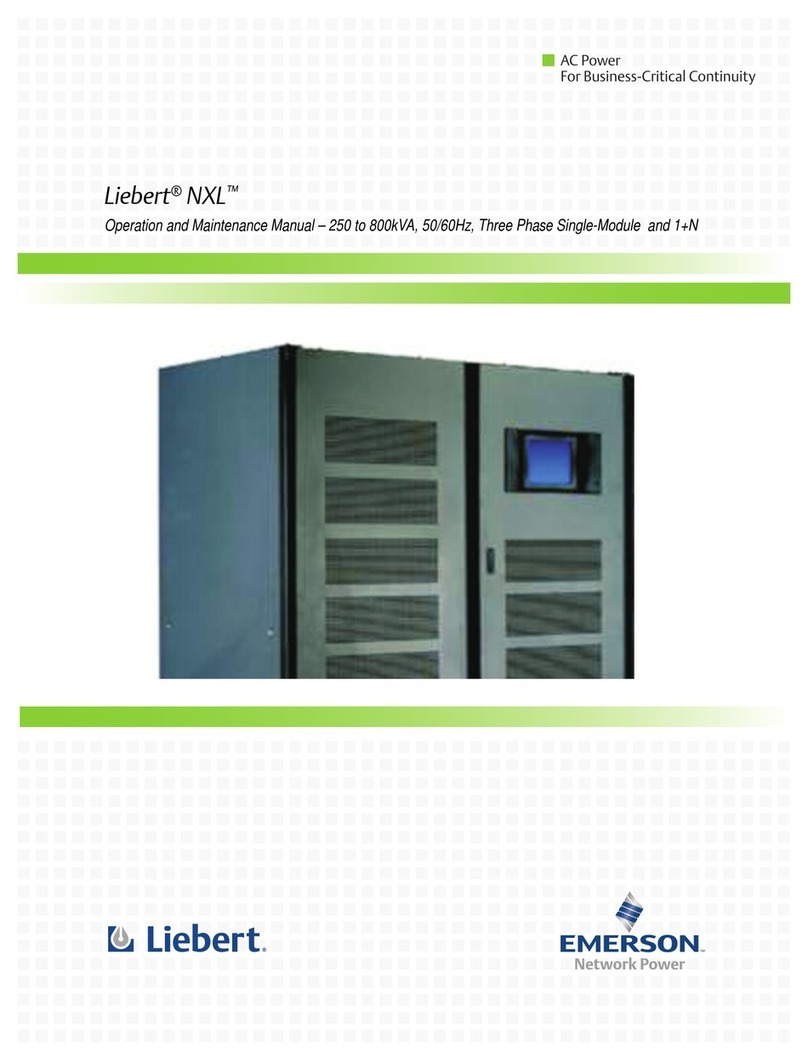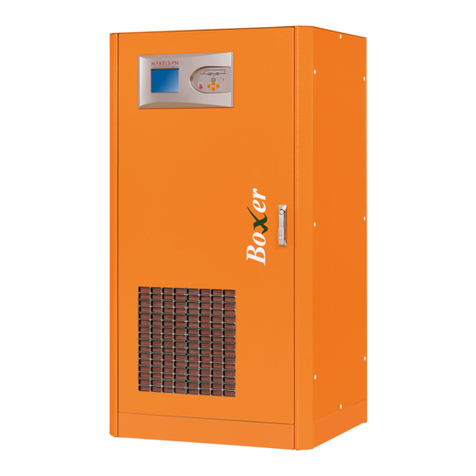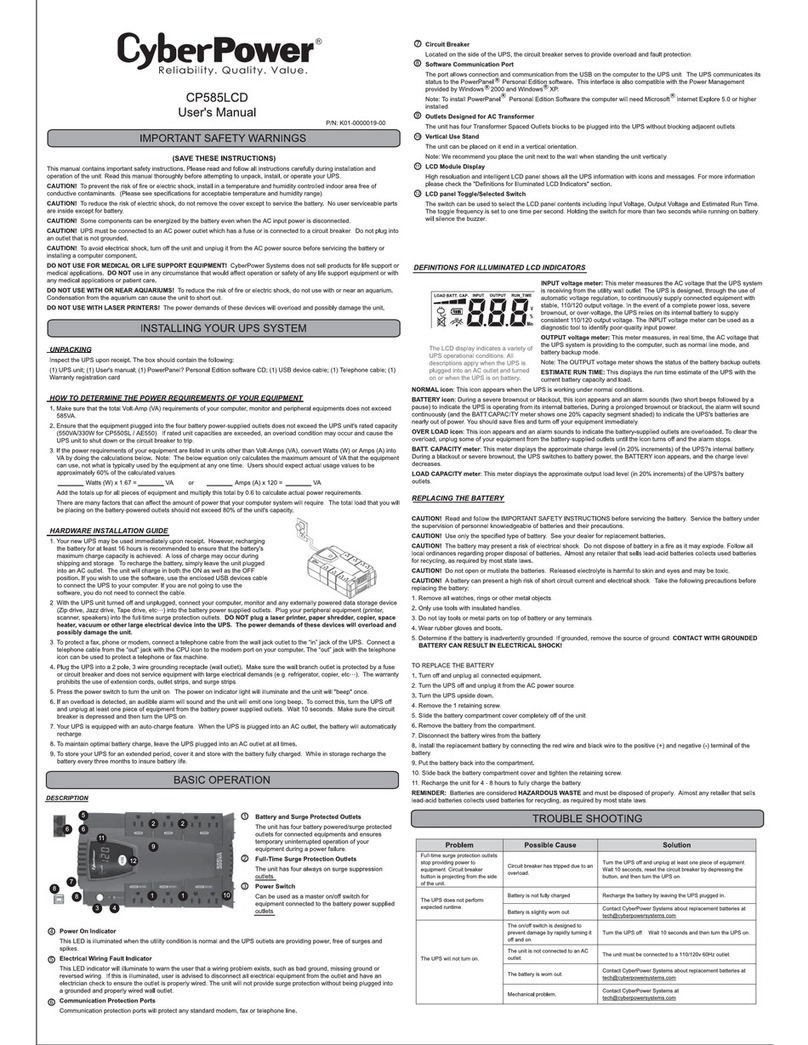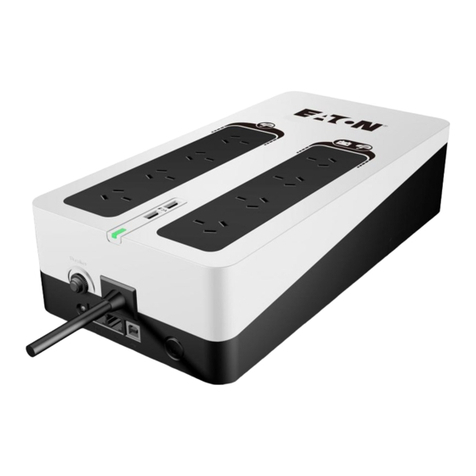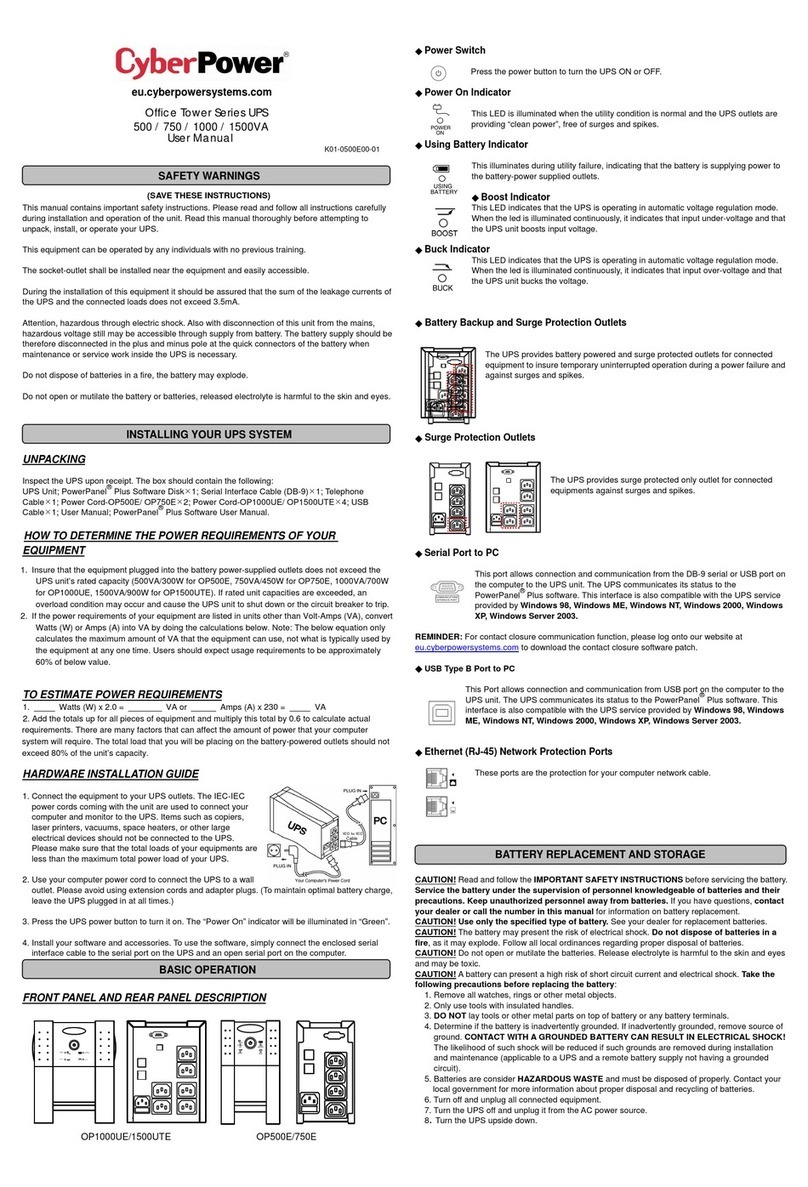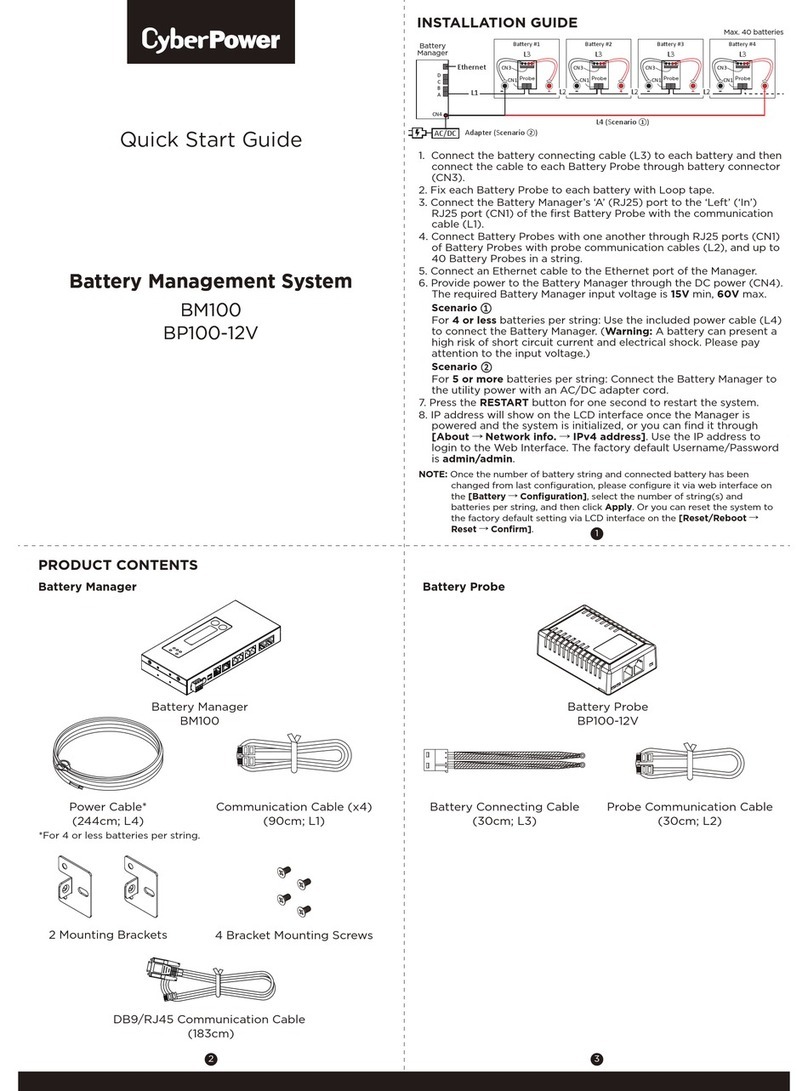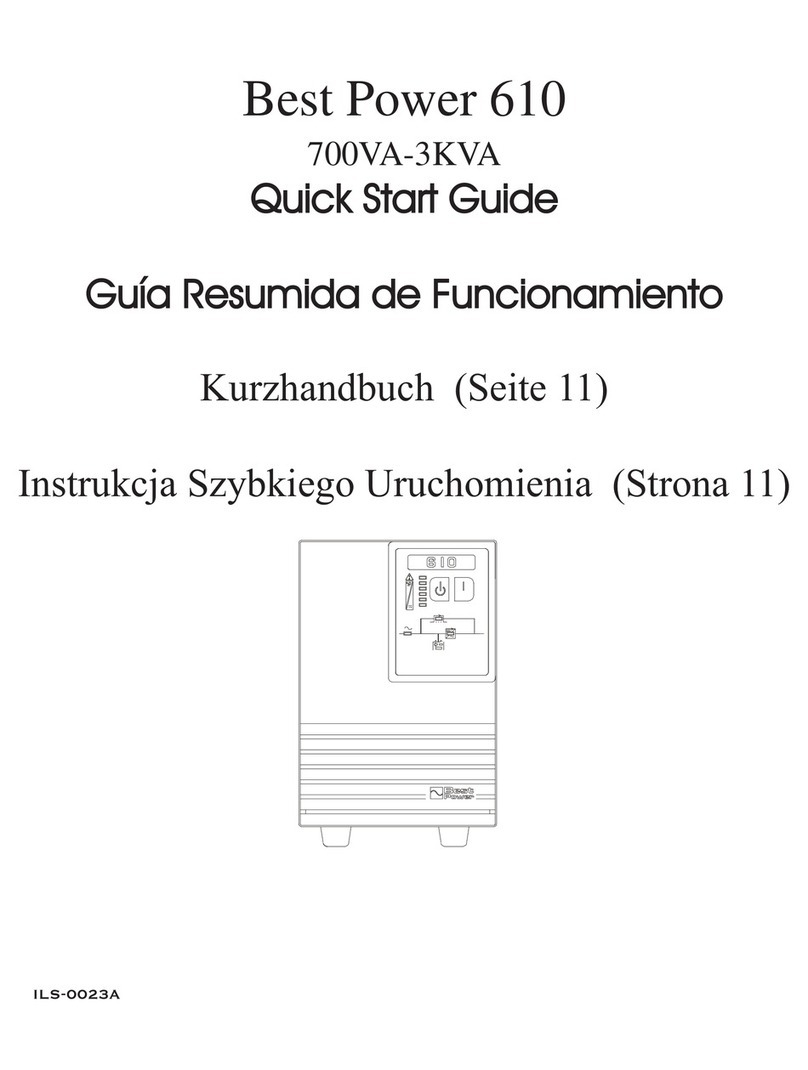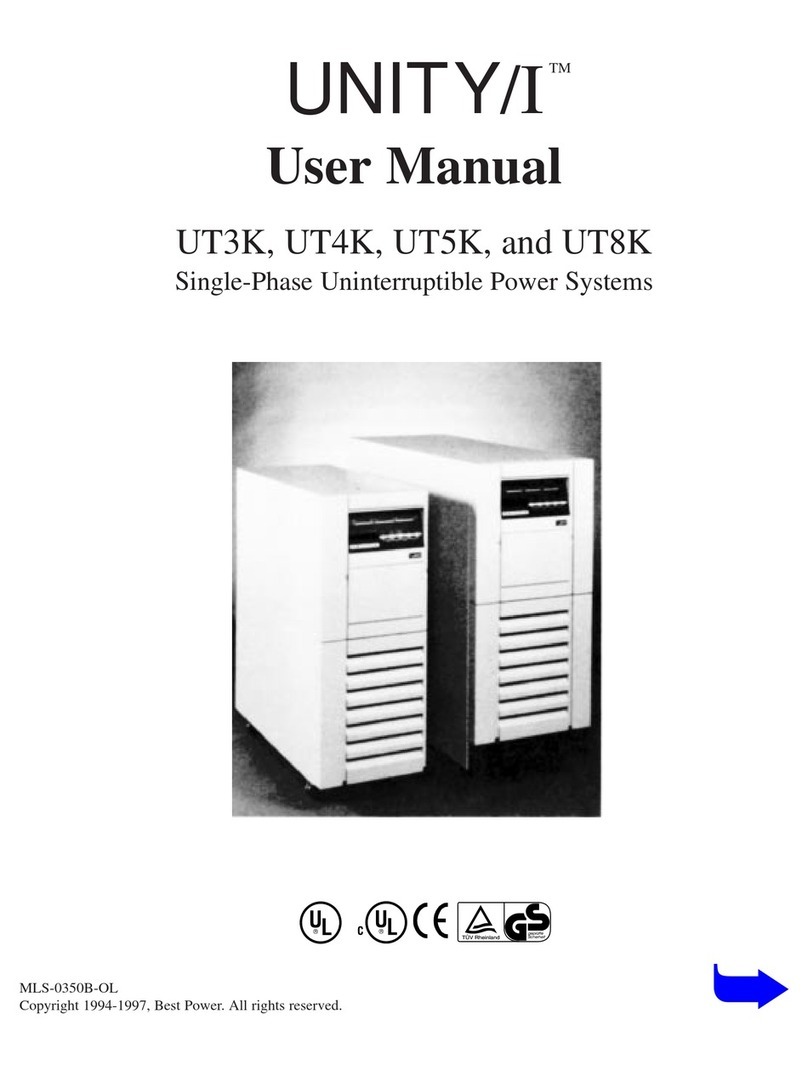Contents
1Safety Warnings ........................................................................................................................................ - 2 -
2Main Features ........................................................................................................................................... - 3 -
2.1 Introduction ........................................................................................................................................ - 3 -
2.2 Functions and Features ....................................................................................................................... - 3 -
3UPS Module Overview ............................................................................................................................. - 4 -
3.1 LCD control panel .............................................................................................................................. - 5 -
4Installation ............................................................................................................................................... - 16 -
4.1 Inspecting the UPS ........................................................................................................................... - 16 -
4.2 Unpacking the Cabinet ..................................................................................................................... - 16 -
4.3 Installation notes............................................................................................................................... - 16 -
4.4 External Protective Devices .............................................................................................................. - 17 -
Power Cables ................................................................................................................................................ - 18 -
4.5 Power cable connections .................................................................................................................. - 18 -
4.6 Battery connection ............................................................................................................................ - 19 -
4.7 UPS Parallel Installation ................................................................................................................... - 20 -
4.8 Cabinet installation ........................................................................................................................... - 20 -
4.9 Parallel cable installation.................................................................................................................. - 21 -
4.10 Requirement for the parallel system ................................................................................................ - 21 -
5Operation ................................................................................................................................................. - 22 -
5.1 Operation Modes .............................................................................................................................. - 22 -
5.2 Turn on/off UPS ............................................................................................................................... - 22 -
5.2.1 Connecting with Utility............................................................................................................ - 22 -
5.2.2 Black (Cold) start procedure .................................................................................................... - 23 -
5.2.3 Inverter Off .............................................................................................................................. - 23 -
5.2.4 Disconnecting with Utility ....................................................................................................... - 23 -
5.3 LCD Display instruction .................................................................................................................. - 24 -
5.4 Parameters setting............................................................................................................................. - 25 -
5.4.1 Mode setting............................................................................................................................. - 26 -
5.4.2 Output voltage setting .............................................................................................................. - 26 -
5.4.3 Output frequency setting .......................................................................................................... - 27 -
5.4.4 Battery capacity setting ............................................................................................................ - 27 -
5.4.5 Battery quantity setting ............................................................................................................ - 28 -
5.4.6 Bypass Volt-Hi setting ............................................................................................................. - 28 -
5.4.7 Bypass Volt-Lo setting ............................................................................................................. - 29 -
5.4.8 Buzzer Mute Setting ................................................................................................................ - 29 -
5.4.9 Battery Test Setting .................................................................................................................. - 30 -
5.4.10 Parallel ID setting .................................................................................................................... - 31 -
5.4.11 Parallel quantity setting............................................................................................................ - 31 -
5.4.12 Parallel redundancy quantity setting ........................................................................................ - 32 -
Appendix 1 Specifications............................................................................................................................... - 33 -
Appendix 2 Communication port definition ................................................................................................. - 35 -
Appendix 3 Option .......................................................................................................................................... - 35 -
Appendix 4 UPS message table ...................................................................................................................... - 36 -

